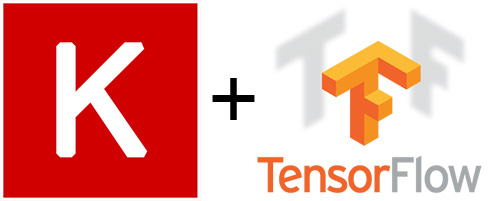This repo is the course website of my deep learning class: Deep Learning Zoo at Physics Department, UC Davis. Each week I will introduce several deep learning topics, from beginning to advanced. Participants are mostly PhD students or researchers who want to use deep learning techniques in their research fields.
Each week I will also prepare a few codes to demonstrate the concepts. Most of our code are based on Tensorflow and Keras. If you have further questions, please email to spi@ucdavis.edu.
Note that deep learning can hugely speed up by using GPU. Therefore, if you have nVidia GPUs, it is strongly recommend to use GPUs as backend.
week 01: Introduction to deep learning
week 02: Basis of Deep Learning: Regression
week 03: Basis of Deep Learning: Tensorboard & Classification
week 04: Basis of Deep Learning: Look back Deep Learning Again
week 05: Basis of Deep Learning: MNIST & Keras
week 06: Conventional Neural Network
week 07: Recurrent Neural Network
week 08: Natural Language Processing
week 09: Autoencoder
[week 10: Advanced Neural Networks(GAN, one-shot, style-transfer, seq2seq, attention based)]
【week 1】:
Package Install.txt
=> This file shows how to install all necessary packages and set up your environments.
【week 2】:
MLP_curve_fitting_1.py
=> This code shows how to define a neural layer to fit a curve
MLP_curve_fitting_2.py
=> similar to MLP_curve_fitting_1 but with batch training
MLP_curve_fitting_3.py
=> similar to MLP_curve_fitting_2 but use built-in API to construct layers
【week 3】:
Tensorboard_1.py
=> This code shows how to use tensorboard to see computation graph
Tensorboard_2.py
=> similar to Tensorboard_1.py, but shows how to visualize training results
Point_classification.py
=> This code shows how to use simple MLP for point classification
【week 4】:
save_tf_model.py
=> this code shows how to save trained model in tensorflow
curve_overtiffing.py
=> this code shows how to use dropout to improve overfitting in a curve fitting problem
【week 5】:
MLP_mnist_1.py
=> this code shows how to load and visualize MNIST handwriting digits in tensorflow
MLP_mnist_2.py
=> similar to MLP_mnist_1.py but now shows how to train a MLP for MNIST recognization
MLP_mnist_overfitting.py
=> similar to MLP_mnist_2.py but include dropout layers to improve overfitting
MLP_Keras_mnist.py
=> similar to MLP_mnist_overfitting.py but use Keras
【week 6】:
CNN_mnist_1.py
=> this code shows how to construct a CNN to recognize MNIST
CNN_mnist_2.py
=> similar to CNN_mnist_1.py but use t-SNE reduce dimension from CNN output for visualization
CNN_mnist_keras.py
=> similar to CNN_mnist_1.py but use Keras
【week 7】:
RNN_mnist.py
=> this code shows how to use RNN/LSTM to do MNIST
RNN_curve_fitting.py
=> this code shows how to use RNN/LSTM to fit time series data
IRNN_mnist.py
=> this code shows how to use IRNN to do MNIST
【week 8】:
NLP_preprocessing.py
=> this code shows how to download & tokenize text (IMDB) data for later training
NLP_MLP_Retuers.py
=> this code shows how to use MLP to categorize news from Reuters 46 News dataset
NLP_IMDB_CNN_RNN.py
=> this code shows how to use CNN+RNN for sentimental prediction on IMDB dataset
NLP_IMDB_LSTM.py
=> this code shows how to use LSTM for sentimental prediction on IMDB dataset
【week 9】:
Deep_Autoencoder.py
=> this code shows how to use autoencoder for dimension reduction on MNIST
AE_denosing.py
=> this code shows how to use autoencoder for denoising
